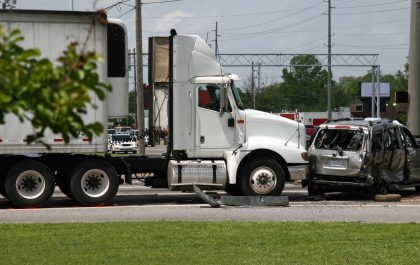For transportation and trucking businesses, managing insurance isn’t for the faint of heart. Legal settlements are increasing, premiums are skyrocketing, and equipment is getting more expensive. What’s more, new rules and legislation are changing how safety is managed and understood. As the industry shifts, technologies that place driver’s safety at the forefront are playing a key role in reshaping the landscape, also allowing technology adapters to diminish risks and position themselves more in the driver’s seat.
To stay insurable and reduce future cost increases, fleet managers seemingly have no other option than to shoulder the burden of evidence that their sustained efforts to reduce risk are actually working.
ELD Compliant
Not all commercial insurance agencies have boggled from providing insurance discounts for using certain technology.
Some agencies offer discounts to fleets that share electronic log data through the Smart Haul program. This allows insurers to review a carrier’s ELD data records on a yearly basis to make a determination.
As such, they’re able to compare an individual’s driving habit to those of a similar commercial truck driver and determine the discounts based on their most recent driving history. So far, telematics systems that incorporate in-cab cameras have proven to be most effective for minimizing risks. Telematics help change risky behaviors and protect insurers and fleets from fraudulent claims.
Collision Avoidance Systems
Smart anti-collision systems sense when a vehicle is getting too close and apply the brakes on behalf of the driver to reduce the risk. While these technologies have been around for a while, more commercial fleets promise to come equipped with these technologies already on the market, and other retrofit options have recently entered into use for older trucks.
These systems don’t just help employees avoid accidents, they also encourage safer driving practices by accessing data that can be used to reinstruct drivers or to create genuine safety programs for a business to make the entire fleet safer.
Driver Behavior Detection
A wave of new technology is beginning to hit the trucking industry to help reduce driver fatigue. While an in-cab camera system can retroactively tell whether a driver was asleep at the wheel in the event of an accident, anti-fatigue technology can reduce the probability of dangerous scenarios.
For instance, fatigue-meters systems use hours-of-service logs to predict a driver’s fatigue levels, updating fleet managers with in-depth assessments for every driver in the fleet.
Smart wearables can also analyze drivers’ fatigue levels by measuring body movements, calculating sleep amount, and notifying when alertness will start to decline.
Data collected through these new safety technologies can not only help identify and trigger potentially fatigued or dangerous drivers but also help- lead to hours-of-safety regulations and more personalized training for each driver to improve safety and encourage a safety-centered culture that can lower premiums.
The (FMCSA) demonstrated that telematics can be used to monitor driver performance and improve safe driving behavior. With Tangerine’s fleet management solutions, commercial fleet businesses can increase safety and productivity of their fleets through actionable intelligence and become more proactive and efficient.





